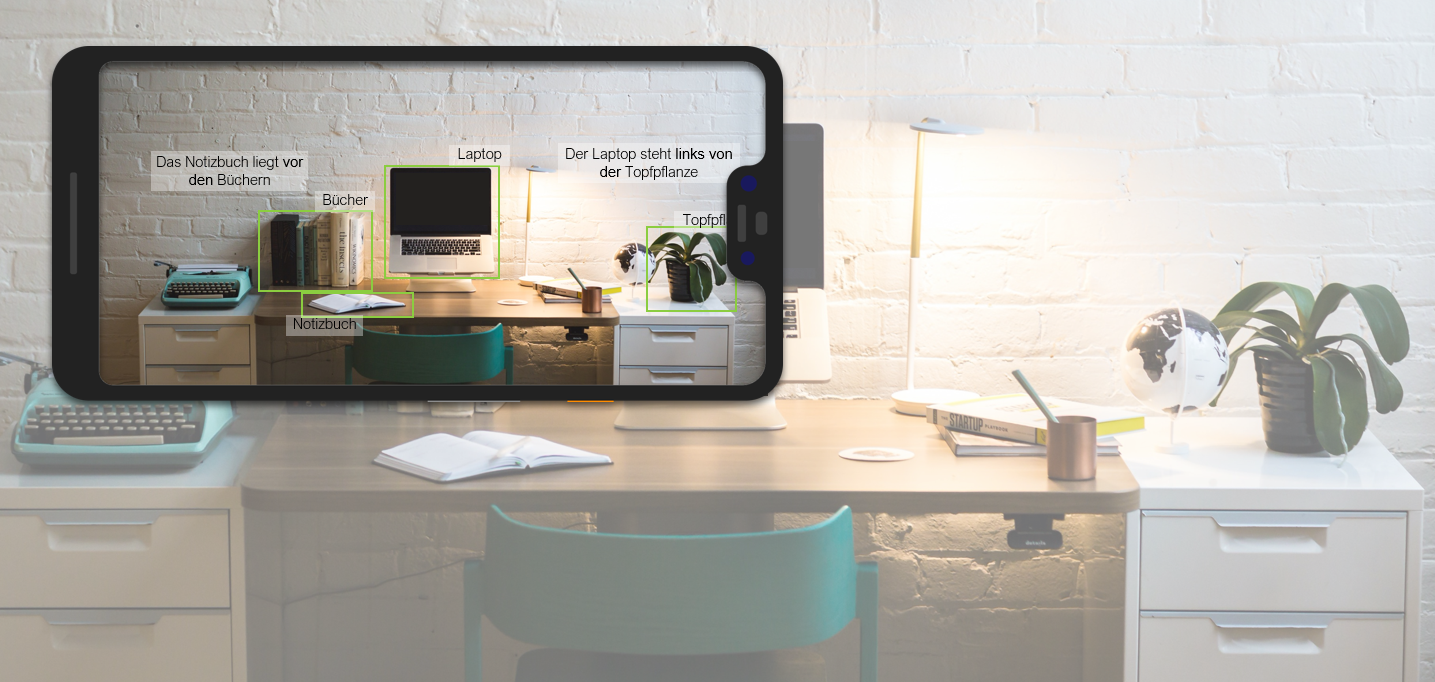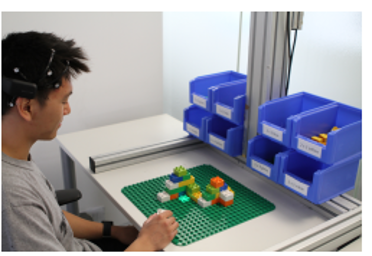Research of the Chair
What are the factors determine our ability to remain focused on a task and not reorient our lim ited mental resources elsewhere? Our research uses a combination of psychophysics and psychophysiological methods to understand the mechanisms that underlie sustained attention and its interruption. In particular, we are interested in the phenomenon of ,,inattentional deafness", whereby individuals do not notice the occurrence of seemingly task-irrelevant events that may turn out to be important later on. We have investigated this phenomenon in the context of continuous motor control, allowing for generalizations to vehicle control. This line of research has implications for the design of notification displays and working practices.
ited mental resources elsewhere? Our research uses a combination of psychophysics and psychophysiological methods to understand the mechanisms that underlie sustained attention and its interruption. In particular, we are interested in the phenomenon of ,,inattentional deafness", whereby individuals do not notice the occurrence of seemingly task-irrelevant events that may turn out to be important later on. We have investigated this phenomenon in the context of continuous motor control, allowing for generalizations to vehicle control. This line of research has implications for the design of notification displays and working practices.
Selected Publications:
Glatz, C., & Chuang, L. L. (2019). The time course of auditory looming cues in redirecting visuo-spatial attention. Scientific Reports, 9(1), 1-10. Link
Brandenburg, S., & Chuang, L. (2019). Take-over requests during highly automated driving: How should they be presented and under what conditions?. Transportation research part F: traffic psychology and behaviour, 66, 214-225. Link
Scheer, M., Bülthoff, H. H., & Chuang, L. L. (2018). Auditory task irrelevance: a basis for inattentional deafness. Human factors, 60(3), 428-440. Link
Sadeghian Borojeni, S., Boll, S. C., Heuten, W., Bülthoff, H. H., & Chuang, L. (2018). Feel the movement: Real motion influences responses to take-over requests in highly automated vehicles. In Proceedings of the 2018 CHI Conference on Human Factors in Computing Systems, 1-13. Honorable Mention Award (top 10%). Link
Scheer, M., Bülthoff, H. H., & Chuang, L. L. (2016). Steering demands diminish the early-P3, late-P3 and RON components of the event-related potential of task-irrelevant environmental sounds. Frontiers in human neuroscience, 10, 73. Link
The miniaturization of electronics combined with cloud computing means that we are able to outsource cognitive processes to wearable devices, such as a smartwatch that monitors our fitness levels. We research the implications of this for augmenting the native intelligence of human users across novel systems. For instance, using computer vision on smartphones to support foreign language learning.

Selected Publications:
Draxler, F., Brenner, J. M., Eska, M., Schmidt, A., & Chuang, L. L. (2022). Agenda-and Activity-Based Triggers for Microlearning. In 27th International Conference on Intelligent User Interfaces (620-632) Link
Draxler, F., Labrie, A., Schmidt, A., & Chuang, L. L. (2020). Augmented reality to enable users in learning case grammar from their real-world interactions. In Proceedings of the 2020 CHI Conference on Human Factors in Computing Systems (1-12). Honorable Mention Award (top 10%). Link
Kosch, T., Schmidt, A., Thanheiser, S., & Chuang, L. L. (2020). One does not simply RSVP: mental workload to select speed reading parameters using electroencephalography. In Proceedings of the 2020 CHI Conference on Human Factors in Computing Systems (1-13). Link
Karolus, J., Wozniak, P. W., Chuang, L. L., & Schmidt, A. (2017). Robust gaze features for enabling language proficiency awareness. In Proceedings of the 2017 CHI conference on human factors in computing systems (2998-3010). Link
Human-Machine Interfaces tend to be designed for uni-directional communications. Even with intuitive input  channels, such as gestures, a machine typically operates on the explicit instructions provided by human users. Our research informs the design of bi-directional interfaces that enable machines to adapt themselves to the changing requirements of human users as well as to provide human users oversight of the "reasoning" processes that underlie decision making in automated machine systems. This involves understanding how humans adapt their behavior and levels of acceptance according to the perceived reliability of machine systems as co-workers. In one project (right), we determined how just-in-time instructions for assembling an object could reduce perceived mental workload, which is reflected in EEG activity. Ongoing research is interested in ensuring that reducing mental workload does not result in boredom or task disengagement.
channels, such as gestures, a machine typically operates on the explicit instructions provided by human users. Our research informs the design of bi-directional interfaces that enable machines to adapt themselves to the changing requirements of human users as well as to provide human users oversight of the "reasoning" processes that underlie decision making in automated machine systems. This involves understanding how humans adapt their behavior and levels of acceptance according to the perceived reliability of machine systems as co-workers. In one project (right), we determined how just-in-time instructions for assembling an object could reduce perceived mental workload, which is reflected in EEG activity. Ongoing research is interested in ensuring that reducing mental workload does not result in boredom or task disengagement.
Selected Publications:
Kosch, T., Welsch, R., Chuang, L., & Schmidt, A. (2023). The Placebo Effect of Artificial Intelligence in Human–Computer Interaction. ACM Transactions on Computer-Human Interaction, 29(6), 1-32. Link
Bethge, D., Kosch, T., Grosse-Puppendahl, T., Chuang, L. L., Kari, M., Jagaciak, A., & Schmidt, A. (2021). VEmotion: Using Driving Context for Indirect Emotion Prediction in Real-Time. In The 34th Annual ACM Symposium on User Interface Software and Technology (pp. 638-651). Link
Janssen, C. P., Boyle, L. N., Kun, A. L., Ju, W., & Chuang, L. L. (2019). A hidden markov framework to capture human–machine interaction in automated vehicles. International Journal of Human–Computer Interaction, 35(11), 947-955. Link
Kosch, T., Funk, M., Schmidt, A., & Chuang, L. L. (2018). Identifying cognitive assistance with mobile electroencephalography: A case study with in-situ projections for manual assembly. Proceedings of the ACM on Human-Computer Interaction, 2(EICS), 1-20. Link
Mayer, S., Le, H. V., Nesti, A., Henze, N., Bülthoff, H. H., & Chuang, L. L. (2018). The effect of road bumps on touch interaction in cars. In Proceedings of the 10th International Conference on automotive user interfaces and interactive vehicular applications (pp. 85-93). Link
Faltaous, S., Baumann, M., Schneegass, S., & Chuang, L. L. (2018). Design guidelines for reliability communication in autonomous vehicles. In Proceedings of the 10th international conference on automotive user interfaces and interactive vehicular applications (pp. 258-267). Link
Son, H. I., Franchi, A., Chuang, L. L., Kim, J., Bulthoff, H. H., & Giordano, P. R. (2013). Human-centered design and evaluation of haptic cueing for teleoperation of multiple mobile robots. IEEE transactions on cybernetics, 43(2), 597-609. Link
Advances in displays has allowed us to create synthetic experiences for our sensory modalities. Thus, our perception of physical reality can be mediated by technology and auxiliary information. This poses several challenges. First, in negotiating the smooth interactions of all actors who inhabit the same physical space. Second, in ensuring that auxiliary information complement rather than conflict with information from physical reality. Third, in designing the presentation of auxiliary and novel information to be compatible with our sensory abilities.
Selected Publications:
Huang, A., Knierim, P., Chiossi, F., Chuang, L. L., & Welsch, R. (2022). Proxemics for Human-Agent Interaction in Augmented Reality. In CHI Conference on Human Factors in Computing Systems (pp. 1-13).
Ju, U., Chuang, L. L., & Wallraven, C. (2020). Acoustic Cues Increase Situational Awareness in Accident Situations: A VR Car-Driving Study. IEEE Transactions on Intelligent Transportation Systems.
Draxler, F., Labrie, A., Schmidt, A., & Chuang, L. L. (2020). Augmented reality to enable users in learning case grammar from their real-world interactions. In Proceedings of the 2020 CHI Conference on Human Factors in Computing Systems (pp. 1-12). Honorable Mention Award (top 10%)
Benz, T. M., Riedl, B., & Chuang, L. L. (2019). Projection displays induce less simulator sickness than head-mounted displays in a real vehicle driving simulator. In Proceedings of the 11th International Conference on Automotive User Interfaces and Interactive Vehicular Applications (pp. 379-387).
Bonaventura, X., Feixas, M., Sbert, M., Chuang, L., & Wallraven, C. (2018). A survey of viewpoint selection methods for polygonal models. Entropy, 20(5), 370.
Schwind, V., Knierim, P., Chuang, L., & Henze, N. (2017). " Where's Pinky?" The Effects of a Reduced Number of Fingers in Virtual Reality. In Proceedings of the Annual Symposium on Computer-Human Interaction in Play (pp. 507-515).
